Shadow of the Tomb Raider Review
September 14, 2018 | 13:30
Companies: #crystal-dynamics #eidos-montreal
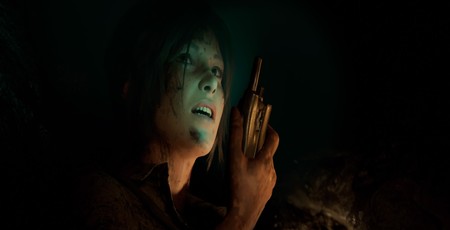
Price: £49.99
Developer: Eidos Montreal/Crystal Dynamics
Publisher: Square Enix
Platform: PC, PS4, Xbox One
Version Reviewed: PS4
Shadow of the Tomb Raider sets out a bold stall. After twenty-two years of pillaging ancient cultures for their artefacts, Lara Croft finally grows a conscience and realises that perhaps tomb raiding isn’t the noble endeavour that previous generations believed it to be. It takes accidentally triggering a supernatural flood that wipes out an entire town to nudge her toward this way of thinking. But still, seeing Lara actually question her role in the world is an interesting premise.
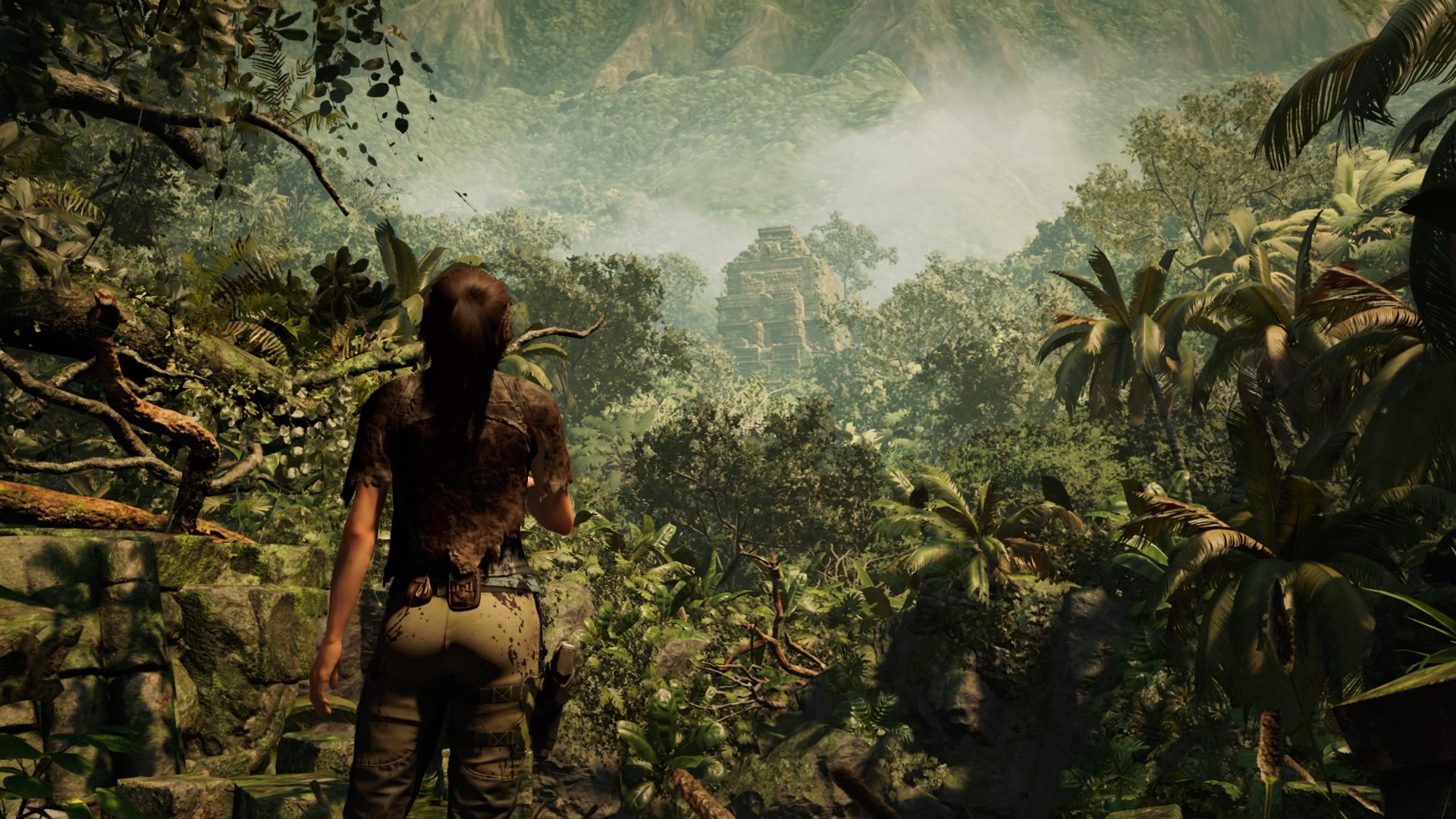
Unfortunately, there’s a problem with Shadow of the Tomb Raider’s hand-wringing about Lara’s rogue archaeology, which is that the tomb raiding is easily the most fun aspect of the game, and you do absolutely loads of it. The burial chambers and sacrificial pits Lara explores in her Peruvian adventure, alongside the challenge tombs and optional crypts you can investigate along the way, feature by far the strongest visual design and spatial puzzling in the entirety of this rebooted series.
It’s a dichotomy that sums up Shadow of the Tomb Raider, which features some great ideas and glorious visual design, but seems unable to bring its many bits and pieces together in a coherent fashion. Indeed, for the first three hours, Shadow of the Tomb Raider appears to be an entirely different game from what it ultimately reveals itself as. It has not one introductory sequence but three, kicking off with an in-medias-res plane crash, before reverting to an earlier sequence where Lara stalks a group of Trinity agents through a Day of the Dead celebration in the Mexican town of Cozumel.

It’s a low-key and doggedly linear section that is, quite frankly, boring. It isn’t helped by the fact that Lara’s character has barely evolved from the end of the first game, with the developers struggling to find ways to make her interesting that don’t involve physical torture. Even Lara’s voice actress seems to be given up on the character, delivering a distinctly phoned-in performance that at times has a weirdly American twang.
After that thrilling if overly grim flood sequence (which includes a scene where a young boy falls from a window to his death) Shadow returns to the plane crash for the tutorial section. Here we learn how to survive all over again, and delve into a couple of optional tombs, before Eidos hits us with another lengthy linear sequence where they introduce the new, more stealth-focussed combat system, which I’ll discuss in due course.
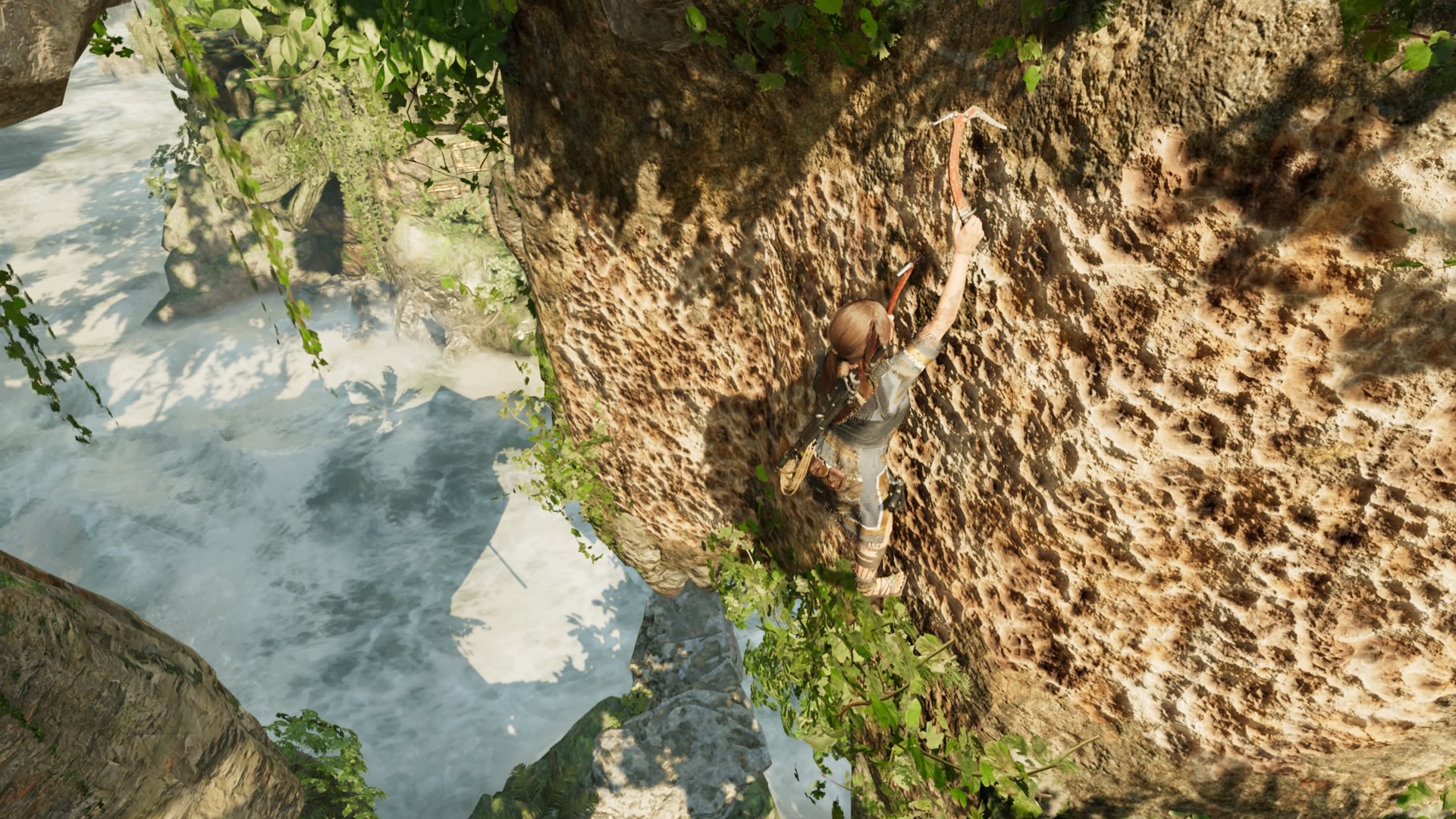
After this we arrive at a town in the jungle, where the game looks like it might open up but actually doesn’t. After just a couple of story missions, you’re moved away from this little forest hideaway, with Lara pushing forward to the ancient and secluded city of Paititi. Here, finally the game opens up a little. Ultimately, the problem is that Shadow of the Tomb Raider obviously wants to be open-world, but doesn’t want to ditch that pacey, action-driven narrative of the previous two games.
Consequently, you don’t get the satisfaction of either. The story never gathers any momentum, constantly throwing weird and nonsensical twists at you to maintain sufficient breadth to fit across the world. There’s one moment when, after killing a small army of guards, Lara has the opportunity to save a major side-character from being captured, but chooses not to for no reason other than it enables another story mission further down the line. Shortly after this, Lara is chased through the street of Paititi by a local cult supporting Trinity, which is apparently in a civil war with the established authority. As soon as the chase ends, however, everything returns to normal, with the cult guards dotted around the city barely acknowledging your presence.
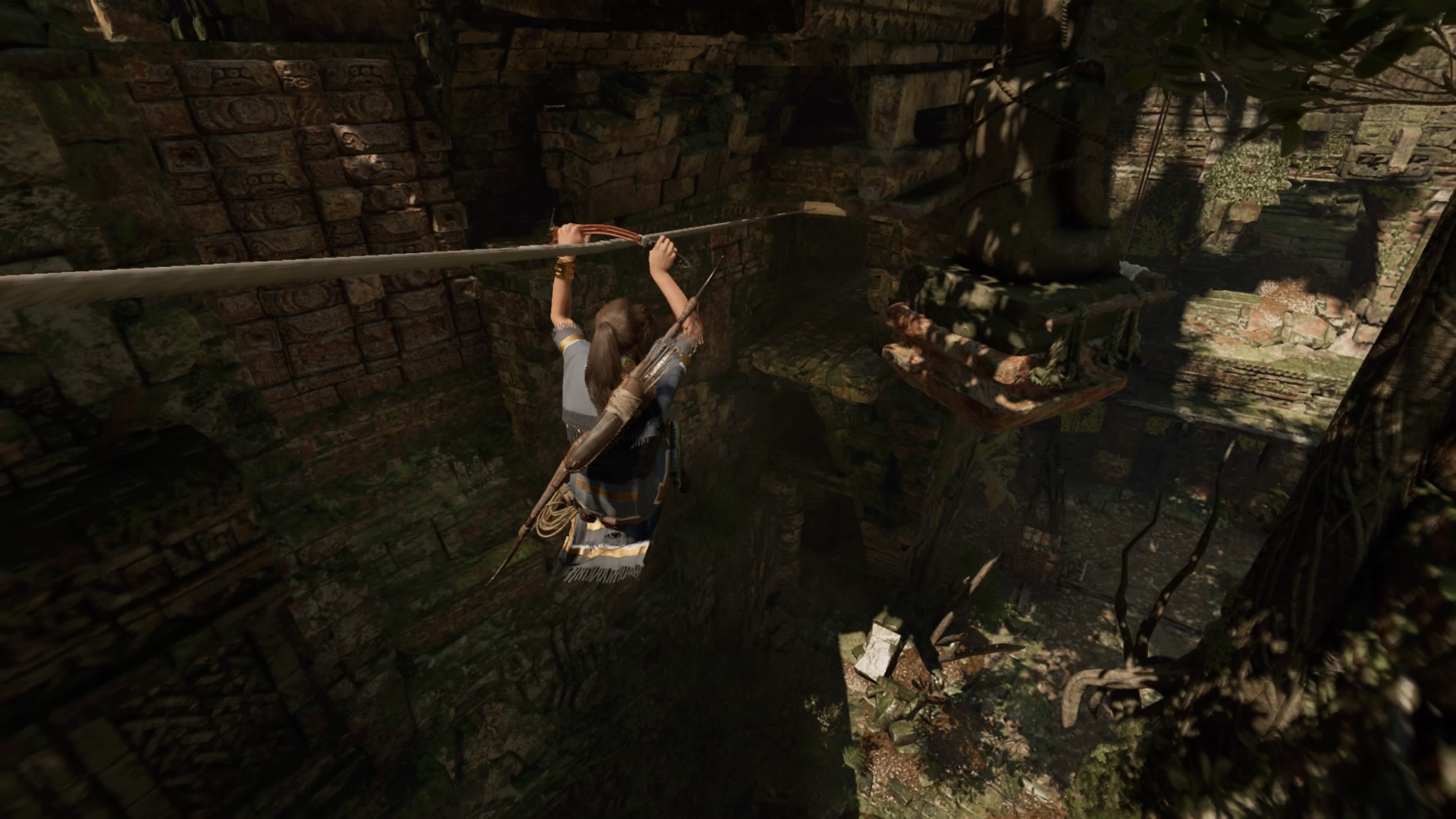
It isn’t just the story that suffers from this bizarre halfway-house of a structure. The systems do too. Shadow of the Tomb Raider reduces the emphasis on cover-based gunfights in favour of a stealth system where Lara uses the jungle to her advantage. She can leap between trees to perform Batman-style stealth takedowns, conceal herself in vegetation walls, and cover herself in mud to decrease the chance of detection. It’s a potentially fantastic system let down by the fact that you only get to use it in limited areas.
Moreover, while this system is enjoyable, it’s not as much fun as the shooting it takes precedence over. Alongside the platforming, Tomb Raider’s meticulously crafted combat scenarios were one of the game’s highlights, particularly in the first game. Outright battles are much rarer in Shadow, which given the jungle setting is a smart idea. Sadly, the stealth just doesn’t have the depth or flexibility to make up for that lack of action.

Aside from the visuals, which are genuinely incredible, the only area of Shadow that is demonstrably improved is the puzzle-platforming. Eidos has added a couple of new moves to Lara’s retinue, such as the ability to climb overhanging walls, and rappel down from climbable surfaces. But it’s the tombs themselves that are the stars of the show. Each one has been meticulously crafted, from central story set-pieces like the Trial of the Eagle and the Sacrificial Chamber, to the splendidly constructed challenge tombs. One of my favourites involves navigating a long series of underwater passageways before finding a gigantic subterranean cavern containing a decaying Spanish galleon.
From this perspective, Shadow is probably the best of all the three games, which makes the emphasis of its story all the more jarring. Clearly, Shadow is attempting to navigate some rather treacherous thematic waters, what with Lara being an upper-class British woman swanning into South America (whose native civilisations were completely destroyed by European colonialism) to have a good rummage in its cultural underpants.
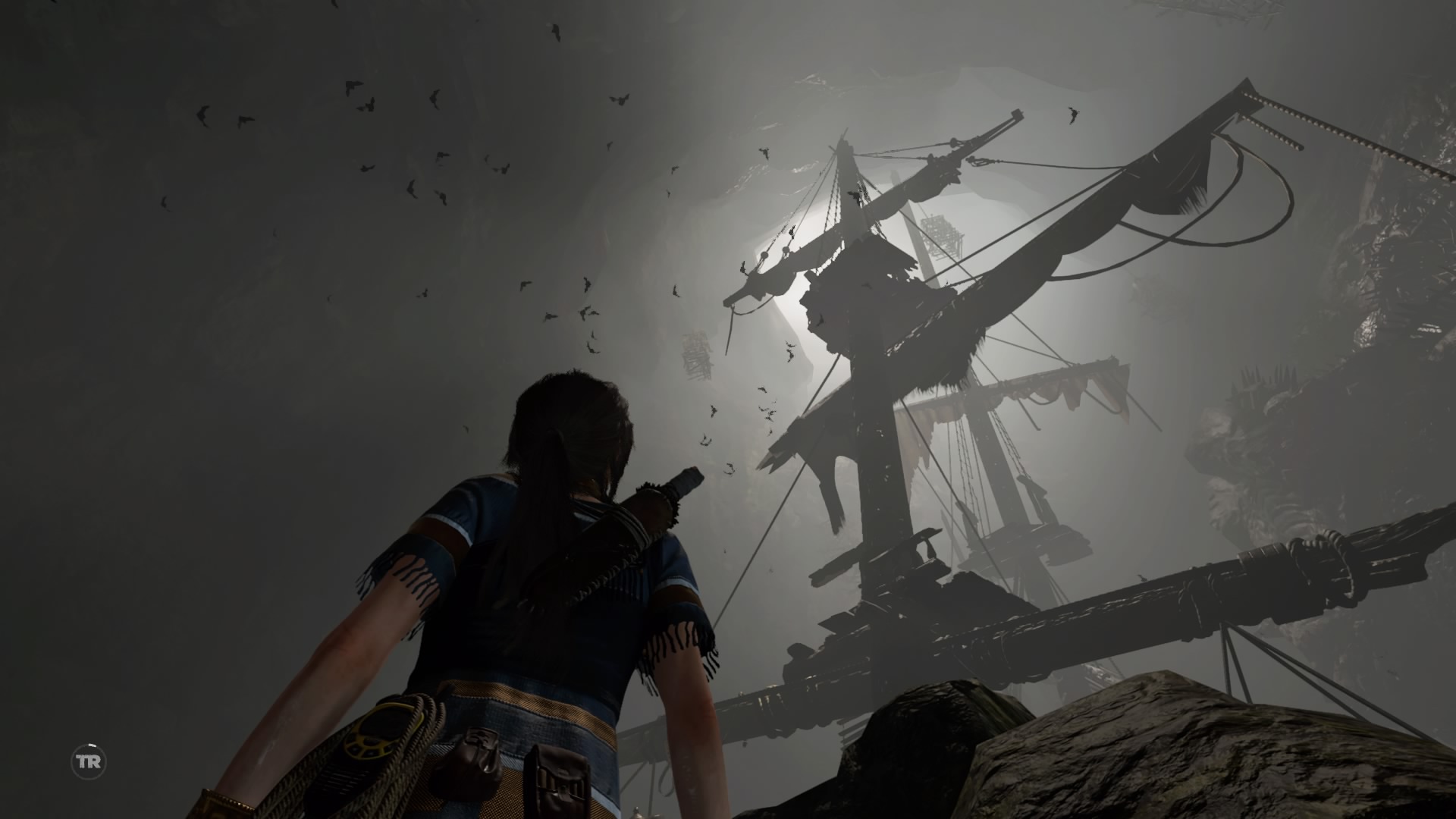
It attempts to mitigate this in a couple of ways, such as giving Lara a big dollop of guilt to handle after triggering that apocalyptic flood, and also having her acquire knowledge from the Tombs she raids rather than treasure. But she’s barely in Paititi for five minutes before the locals embrace her as the great white saviour, at which point the game gives up on its self-awareness and becomes a much more traditional colonial adventure story.
There are other problems too. Because of the sort of open-world structure, Shadow feels the need to sort of offer side-quests. Predictably, they’re undercooked, with lacklustre objectives and lacklustre voice-acting from the quest-givers. One example simply has you talk to five people. That’s it. There’s no adventure, no twist, just a bunch of glass-eyed NPCs telling you stories in a flat monotone. The upgrade system is also very confusing, and impossible to decipher if you’re playing on a TV across the room. Finally, the game is relentlessly humourless. This worked well enough in the 2013 reboot, but here the whole storyline is too absurd to take seriously, and it desperately needs a little levity to stop the player from outright laughing at it.
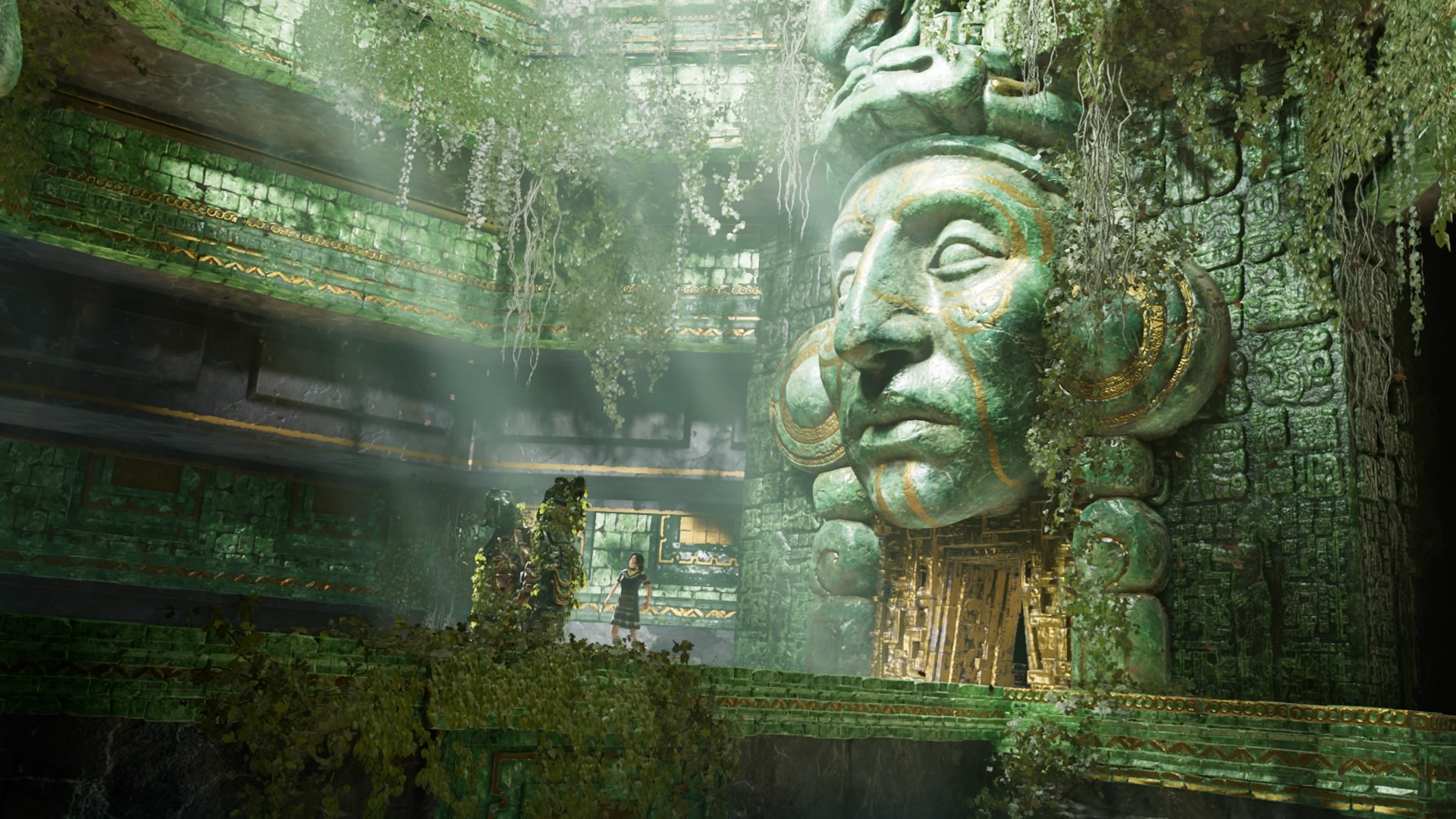
In the end, however, the main problem is that Shadow can’t decide what kind of game it wants to be. Had it committed to an open-world structure, with Lara raiding tombs of her choosing between bouts of stealthily killing Trinity goons, I think it could have been quite brilliant. But it’s held back by a need to service a character who, frankly, had run out of narrative steam by halfway through the second game. I expect that if we see Lara again, it’ll be in yet another new form, one less haunted by the shadow of her past.

MSI MPG Velox 100R Chassis Review
October 14 2021 | 15:04









Want to comment? Please log in.